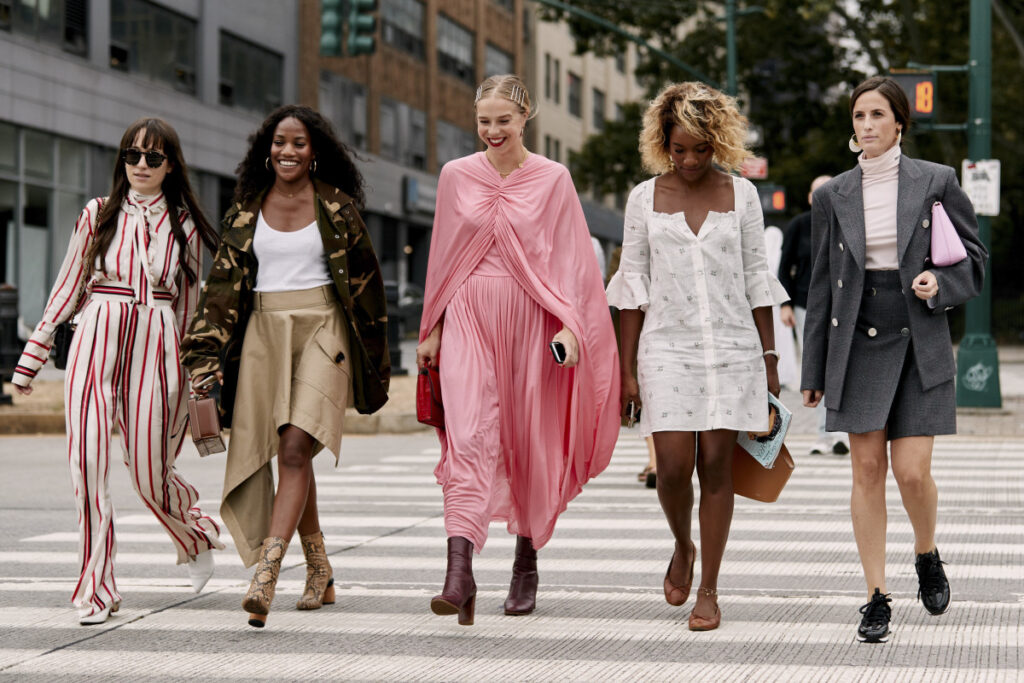Fashion
5 min read
Fashion Reflecting Culture, Identity, and Evolution
Fashion, a term encompassing clothing, footwear, accessories, cosmetics, and jewellery, is a powerful medium of self-
expression, reflecting cultural aesthetics and societal dynamics. This dynamic realm of creativity and identity construction drives how we dress and present ourselves. From its historical roots to its contemporary significance, fashion has evolved into an intricate web of styles, trends, and industry innovation.
Origins and Meaning of Fashion
The word “fashion” finds its origin in the Latin word “Facere,” which translates to “to make.” This aptly captures the essence of fashion as the art of creating, mixing, and wearing outfits that embody cultural aesthetics, patterns, and cuts. These garments serve as a means of expressing group affiliations, values, beliefs, and ways of life. Throughout history, fashion has been closely intertwined with social status and self-expression, enabling individuals to communicate their identities through attire.
Fashion as a Multifaceted Term
Fashion is not confined to mere garments; it is a multifaceted term encompassing various dimensions. It refers to an industry driven by design, manufacturing, and marketing. It represents different styles and aesthetics that evolve with time and societal shifts. Fashion is not static; it’s an ever-changing landscape that caters to changing tastes and preferences. Whether through haute couture or street fashion, it encompasses the diverse ways people express themselves through clothing.
Fashion and Social Signifiers
Garments go beyond practical utility; they serve as social signifiers. People are often evaluated based on attire, considering factors like colours, materials, and silhouettes. However, fashion is subjective and context-dependent. The garment may look different in different body shapes depending on wear and care. This highlights the personal nature of manner, where individuals use clothing to communicate their identity and belonging to particular social groups.
Fashion’s Definitions and Ambiguities
Fashion is a complex term with multiple interpretations. It can signify both novelty and uniformity. While it often conveys the latest trends, it can also refer to styles from previous eras that make a comeback. The fashion industry’s elite, like houses and haute couturiers, defines specific aesthetics. Still, fashion also draws inspiration from subcultures and social groups, blurring the lines of what is considered fashionable.
Fashion, Clothing, and Costume
Fashion, clothing, and costume are often intertwined but have distinct meanings. Clothing pertains to the material and technical aspects of garments. The costume usually refers to elaborate dresses or attire for special occasions. Fashion, however, involves the social and temporal systems that imbue dress with meaning. It’s influenced by cultural movements, markers, and symbols, allowing clothing to transcend its practical function.
Fashion’s Historical Evolution
Economic and social changes throughout history have driven fashion’s evolution. From ancient Rome to the medieval Caliphate, clothing styles shifted in response to societal shifts. The influence of non-Western fashion, once considered unchanging, has been revised to acknowledge its evolution. The myth that non-Western cultures lacked fashion evolution was influenced by Western imperialism and Orientalism, perpetuating false notions about in these regions.
Fashion as Expression and Identity
Fashion, like art, is an avenue for personal expression. It’s a reflection of unique tastes and personal style. People’s it choices are not always mean to be universally like they are a way to communicate one’s individuality. It, as a form of societal formation, combines opposing principles. It allows individuals to distinguish themselves while simultaneously adapting to social norms.
Final Word
Fashion’s journey from historical markers of social status to a tool of personal expression and identity reflects its complexity and significance. As a blend of history, culture, and individuality, it continues to shape our lives, bridging the gap between the past, present, and future. It’s a mirror reflecting society’s values, beliefs, and aspirations, capturing the essence of the human experience.
FAQs
What is fashion?
Fashion is a term use to describe the creation of clothing, accessories, cosmetics, and jewellery that reflects cultural aesthetics. It involves mixing and matching these elements to create distinct styles and trends that signify social status, self-expression, and group belonging.
How does fashion impact our identity?
Fashion plays a crucial role in constructing personal identity. It allows individuals to express their cultural affiliations, values, and beliefs through clothing choices. It serves as a means of self-expression and a way to communicate one’s sense of belonging and individuality.
What does the term “haute couture” mean?
“Haute couture” refers to high-end, custom-made clothing from prestigious it houses. This term is often associate with exclusive and luxurious designs crafted by skilled artisans and catering to a wealthy clientele.
How has fashion evolved?
Fashion has evolved due to economic, social, and cultural changes. Clothing styles have shifted to reflect changing societal norms, values, and preferences. While some it trends come and go quickly, others endure over multiple seasons and are tie to cultural movements.
What is the relationship between fashion and identity?
Fashion and identity are closely intertwined. How individuals dress reflects their tastes, cultural affiliations, and self-perception. Clothing serves as a visual representation of who we are and what we stand for, allowing us to communicate aspects of our identity to others.
Is fashion only about clothing?
No, fashion encompasses more than just clothing. It includes footwear, accessories, cosmetics, jewellery, and even hairstyles. These elements are combine to create a complete it ensemble that reflects an individual’s style and preferences.
How does fashion relate to societal norms?
Fashion often mirrors societal norms and values. It can be influence by cultural shifts, historical events, and changing perceptions of beauty.It designers and consumers contribute to shaping and redefining these norms through their choices and creations.
Why do fashion trends come and go?
A combination of factors, including cultural movements, historical events, pop culture, and the creative visions of designers, influences trends. Trends come and go to cater to evolving consumer preferences and to keep the industry dynamic and innovative.
What role does sustainability play in fashion?
Due to its environmental impact. With mass production and global reach, brands increasingly strive to reduce their carbon footprint and adopt eco-friendly practices to ensure a more sustainable future.
How does fashion influence art and culture?
Fashion is a form of artistic expression that often draws inspiration from art and culture. Designers use cultural elements, historical references, and artistic movements to create unique pieces. In turn, contributes to cultural aesthetics and reflects the values of different societies.
Is fashion purely about following trends?
Fashion is not solely about following trends but also about personal style and self-expression. While trends come and go, individuals can create unique statements by mixing trends, incorporating personal touches, and staying true to their preferences.
What is the significance of fashion history?
Studying fashion history helps us understand how clothing and style have evolved. It provides insights into societal changes, technological advancements, and cultural influences shaping trends and traditions.






